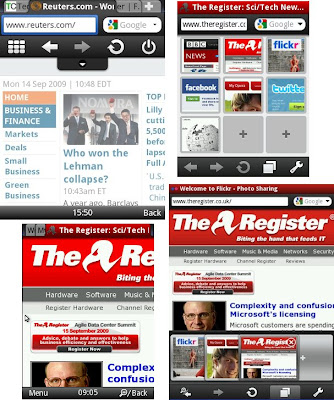
In R99, RLC packets had to be relatively small to avoid the retransmission of very large packets in case of transmission errors. Another reason for the relatively small RLC packet size was the need to provide sufficiently small step sizes for adjusting the data rates for Release 99 channels.
The RLC packet size in Release 99 is not only small, but it is also fixed for Acknowledged Mode Data and there are just a limited number of block sizes in UM Data. This limitation is due to transport channel data rate limitations in Release 99. The RLC payload size is fixed to 40 bytes in Release 99 for Acknowledged Mode Data. The same RLC solution is applied to HSDPA Release 5 and HSUPA Release 6 as well: the 40-byte packets are transmitted from RNC to the base station for HSDPA. An additional confi guration option to use an 80-byte RLC packet size was introduced in Release 5 to avoid extensive RLC protocol overhead, L2 processing and RLC transmission window stalling. With the 2 ms TTI used with HSDPA this leads to possible data rates being multiples of 160 kbps and 320 kbps respectively.
As the data rates are further increased in Release 7, increasing the RLC packet size even further would significantly impact on the granularity of the data rates available for HSDPA scheduling and the possible minimum data rates.
3GPP HSDPA and HSUPA allow the optimization of the L2 operation since L1 retransmissions are used and the probability of L2 retransmissions is very low. Also, the Release 99 transport channel limitation does not apply to HSDPA/HSUPA since the L2 block sizes are independent of the transport formats. Therefore, it is possible to use fl exible and considerably larger RLC sizes and introduce segmentation to the Medium Access Control (MAC) layer in the base station.
This optimization is included for downlink in Release 7 and for uplink in Release 8 and it is called flexible RLC and MAC segmentation solution. The RLC block size in fl exible RLC solution can be as large as an Internet Protocol (IP) packet, which is typically 1500 bytes for download. There is no need for packet segmentation in RNC. By introducing the segmentation to the MAC, the MAC can perform the segmentation of the large RLC PDU based on physical layer requirements when needed. The fl exible RLC concept in downlink is illustrated in Figure above.

There is a lot of interesting information in R&S presentation on HSPA. See here.
Main source of the content above and for further information see: LTE for UMTS: OFDMA and SC-FDMA Based Radio Access





























